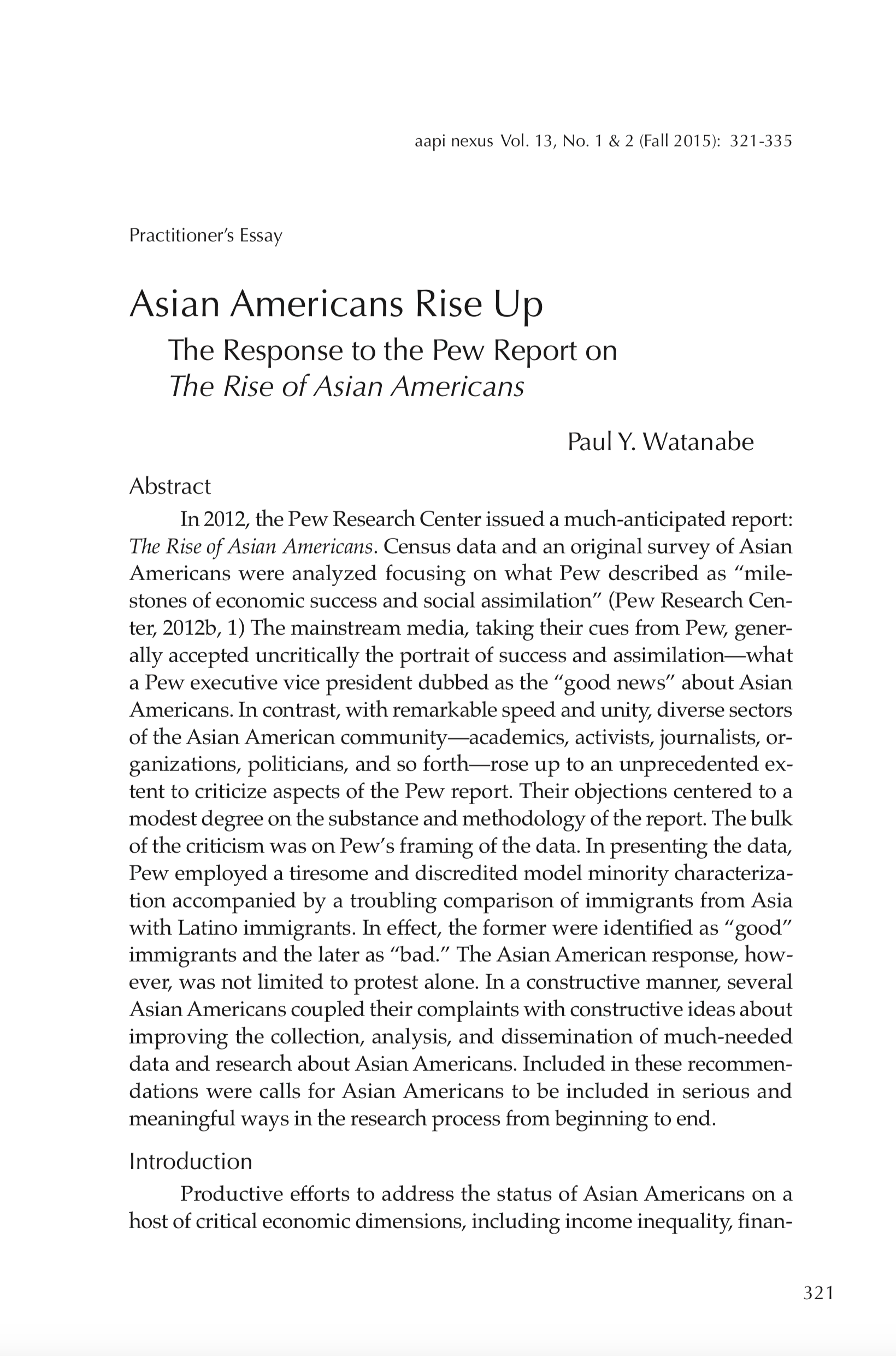“Asian Americans Rise Up The Response to the Pew Report on The Rise of Asian Americans”
Volume 13:1-2, p. 321 (2015)
by Paul Y. Watanabe
ABSTRACT: In 2012, the Pew Research Center issued a much-anticipated report: The Rise of Asian Americans. Census data and an original survey of Asian Americans were analyzed focusing on what Pew described as “milestones of economic success and social assimilation” (Pew Research Center, 2012b, 1) The mainstream media, taking their cues from Pew, generally accepted uncritically the portrait of success and assimilation—what a Pew executive vice president dubbed as the “good news” about Asian Americans. In contrast, with remarkable speed and unity, diverse sectors of the Asian American community—academics, activists, journalists, organizations, politicians, and so forth—rose up to an unprecedented extent to criticize aspects of the Pew report. Their objections centered to a modest degree on the substance and methodology of the report. The bulk of the criticism was on Pew’s framing of the data. In presenting the data, Pew employed a tiresome and discredited model minority characterization accompanied by a troubling comparison of immigrants from Asia with Latino immigrants. In effect, the former were identified as “good” immigrants and the later as “bad.” The Asian American response, however, was not limited to protest alone. In a constructive manner, several Asian Americans coupled their complaints with constructive ideas about improving the collection, analysis, and dissemination of much-needed data and research about Asian Americans. Included in these recommendations were calls for Asian Americans to be included in serious and meaningful ways in the research process from beginning to end.
PREVIEW:

 Download
Download
Article Citation:
Paul Y. Watanabe (2015) Asian Americans Rise Up: The Response to the Pew Report on The Rise of Asian Americans. AAPI Nexus: Policy, Practice and Community: 2015, Vol. 13, No. 1-2, pp. 321-338.
